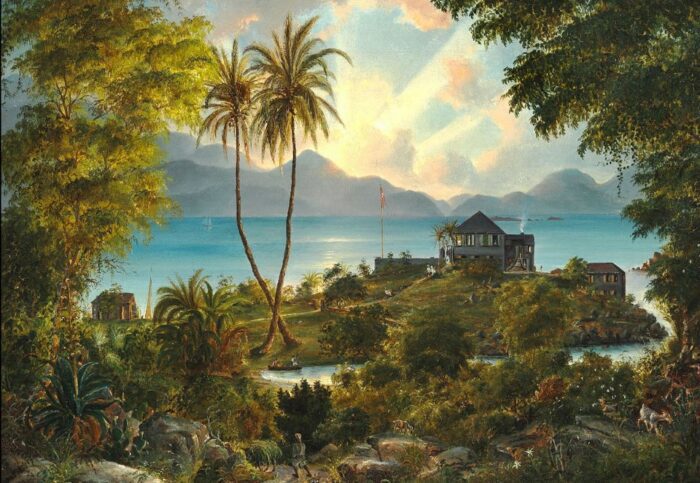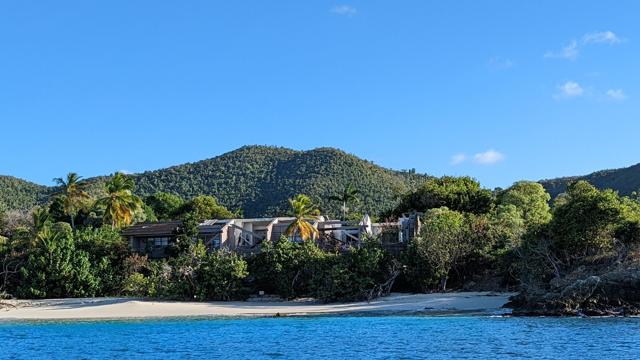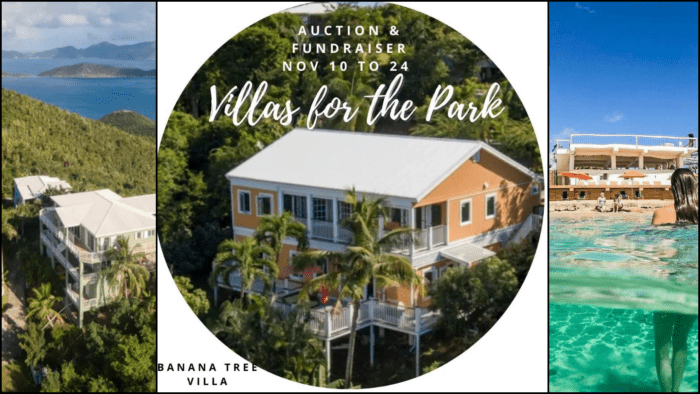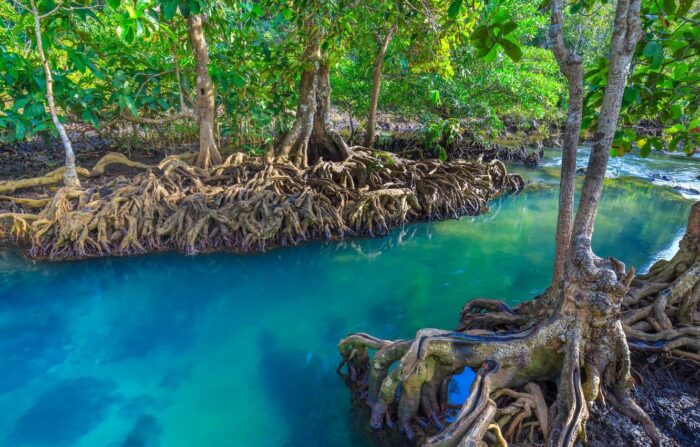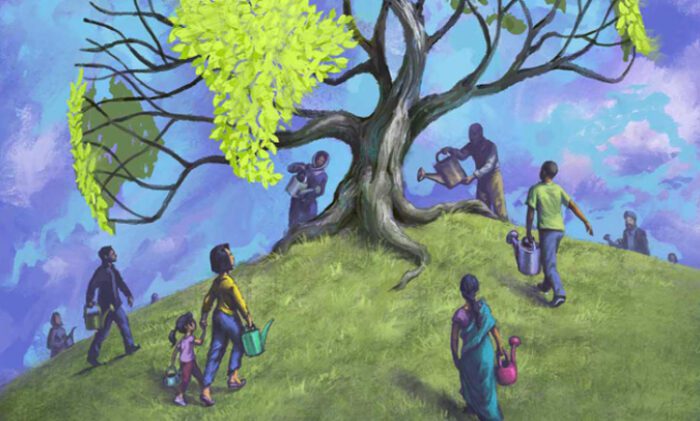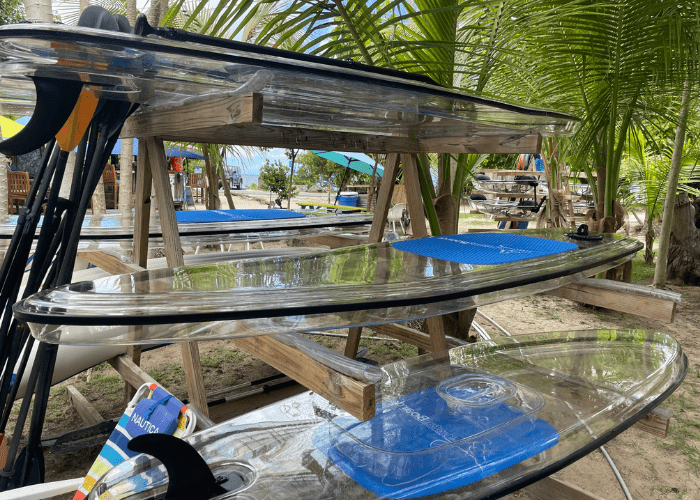The St. John Historical Society, a 501(c)3 nonprofit, will be hosting a 50th anniversary celebration and fundraiser to highlight Caribbean history on Sunday, March 24th at 18°64° Restaurant, located in Mongoose Junction. “Back to the Museum” Night will feature St. John artifacts, historical paintings, and an exclusive look into local families’ private collections. There will be a cash bar, silent auction, raffle, and hors d’oeuvres.
Virgin Islands Park
“Personal Legends” – A Testament to the Virgin Islands
Good morning, and Happy 1st of March, also known down here as Virgin Islands History Month!
Over the last three years, as a resident on St. John, I’ve learned about the deeply rooted, rich culture of the Virgin Islands. Picking fresh fruit from mango trees, eating saltfish and pates, and listening to the harmonious sounds of the steel pan are all aspects of this beautiful culture that I’ve come to know and love.

Recently coming across a series of interviews titled Personal Legends, created by the Friends of the Virgin Islands artist-in-residence Kayden Richards, I am reminded of the time-honored and diverse heritage of the Virgin Islands. By exploring generational traditions shared by nine subjects from St. John, St. Thomas, and St. Croix, Richards perfectly encapsulated the vibrant spirit of these islands and its people.
Read more“Personal Legends” – A Testament to the Virgin Islands
Caneel Bay Part II – What Is This RUE All About?
In 1977, Laurance Rockefeller separated the “Premises”, the land that Caneel Bay Plantation sat on, from the “Improvements”, the structures and operation of the resort. 150 acres of the “Premises” were deeded to the Rockefeller family land trust, Jackson Hole Preserve, Inc. (JHPI); the structures or “Improvements” on that land were kept by Caneel Bay, Inc. with a future Deed that would revert the “Improvements” to Jackson Hole Preserve on September 30th, 2023
What is currently happening with Caneel Bay?
What is the fundamental issue between the U.S. Government, NPS and EHI/CBI Acquisitions? The following 3 Part Article will attempt to delve into some of the key components of the 1983 Indenture, scripted by Laurance Rockefeller in 1983, that outlines the Retained Use Estate (RUE) leasehold within that document which is central to both parties’ pending Motions for Summary Judgement. The author will do her best to explain the facts in detailing what has already transpired and what the future may hold.
Looking for an Incredible Winter Getaway? “Villas for the Park” Auction Kicks off this Friday
Good morning! Off season certainly dragged on, but we made it! High season is fast approaching, which means business as usual. Tourists are arriving to escape the incoming cold back home, and our favorite restaurants, annual events, and fundraisers are back in full swing.
This upcoming Friday, Friends of the Park will begin hosting their 7th annual “Villas for the Park” fundraiser. This unique auction offers nearly 40 hotels or villas, generously donated by their philanthropic managers and owners for an incredible vacation in paradise. Luxurious villas will be auctioned off and the proceeds will go to conservation efforts made by Friends of the Park.
Reclaiming Paradise: St. John’s Mangrove Restoration Project
Tucked away near Annaberg and Leinster Bay is a collaborative initiative between the National Park Service, Friends of the Park, and Iowa State University. Students and community members alike have been hard at work revitalizing the local ecosystem by planting mangrove saplings around the existing Annaberg salt pond.
When Hurricane Irma struck in 2017, a majority of the mangroves were destroyed, and a once thriving coastal forest was almost completely wiped out. Since October of this past year, Friends of the Park employees and Iowa State University students have been restoring this area. What are sometimes referred to as “rainforests of the sea”, mangroves protect our shorelines from erosion, maintain a biodiverse marine life, and encourage carbon sequestration, all vital to the balance of a healthy ecosystem here on St. John.
Read moreReclaiming Paradise: St. John’s Mangrove Restoration Project
The Taino Legacy of a Peaceful, Joyous and Ingenious People
In honor of Caribbean American Heritage Month, we are exploring the earliest inhabitants of our beloved Virgin Islands. The Taino were a creative, peaceful culture who left a unique cultural legacy in the Caribbean. For those who are unfamiliar with the term “Taino,” it refers to “the Arawakan-speaking peoples of the Caribbean who arrived from South America over the course of 4,000 years,” according to an article in National Geographic.
Read moreThe Taino Legacy of a Peaceful, Joyous and Ingenious People
Friends of the Park’s Annual Earth Week Kicks off April 15th
Good morning, good morning!
Every year on April 22nd, Earth Day is celebrated across the globe as more than 190 countries come together to promote environmental awareness and take conservation action. Whether on a large scale advocating for national policy or on a smaller scale participating in local trash cleanups, Earth Day unifies people from all walks of life to protect what we all have in common – calling the Earth our home.
Earth Day was originally created in 1970 by Wisconsin junior Senator Gaylord Nelson, Congressman Pete McCloskey, and activist Denis Hayes in an effort to bring environmental awareness to college campuses. They chose April 22nd because it fell between spring break and exams. College students protesting against careless industrial practices such as toxic waste mismanagement gained National attention, leading to the creation of the Environmental Protection Agency.
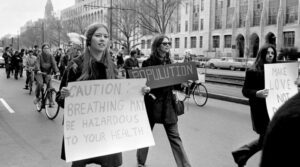
Soon after, laws such as the National Environmental Education Act, Clean Water Act, and the Endangered Species Act were created. Over fourty years ago, Earth Day activism pioneered environmental awareness and exemplified how important it is to teach the community, especially our youth, how to protect our planet for future generations to come. We’re still fighting the good fight, and the annual Earth Day is our reminder.
Read moreFriends of the Park’s Annual Earth Week Kicks off April 15th
A Unique Lens: Crystal Kayaking and Paddleboarding at Maho Beach
Good morning! Peak season is upon us, and I know most visitors will be looking for some unique, outdoorsy activities to do on St. John. I went crystal kayaking at Maho a few days ago and highly recommend it!
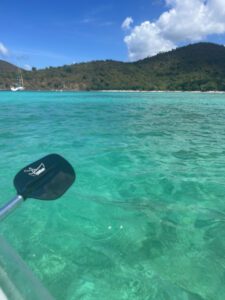
Having lived on St. John for two years, you would think I’ve done everything this beautiful, small island has to offer a million times over, and yet I am still pleasantly surprised by the amount of fun activities that I find on my days off. Recently, I spent the day at Maho, one of my favorite beaches, and tried the crystal kayaking and paddleboarding offered at Maho Crossroads.
Read moreA Unique Lens: Crystal Kayaking and Paddleboarding at Maho Beach
Living in Luxury: Villas for the Park Auction Highlights (pt. 2)
Happy Wednesday, er, uh, Thursday! Is it just me this week or is everyone else losing days? I looked at Teddy on Monday and asked if it was Wednesday and literally just had to look at my calendar in order to correct myself to Thursday on that intro. And I can’t even blame daylight savings time down here. Ha!
Anyways…Last week I told you a bit about the Friends VINP Villas for the Park auction and included some of the highlighted properties from their bidding catalog. And, as promised, I wanted to take a moment today, yes Thursday, to roll through a few more of these fantastic properties in preparation for the commencement of bidding tomorrow!
Read moreLiving in Luxury: Villas for the Park Auction Highlights (pt. 2)


